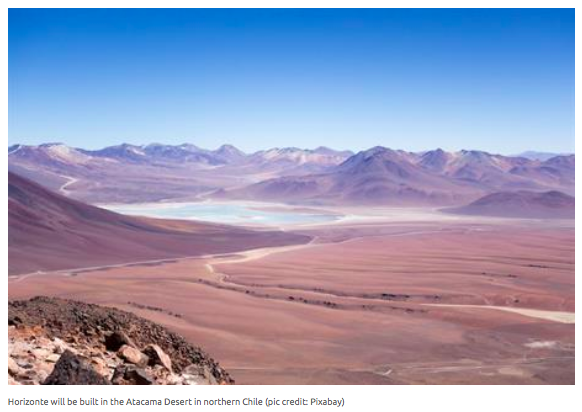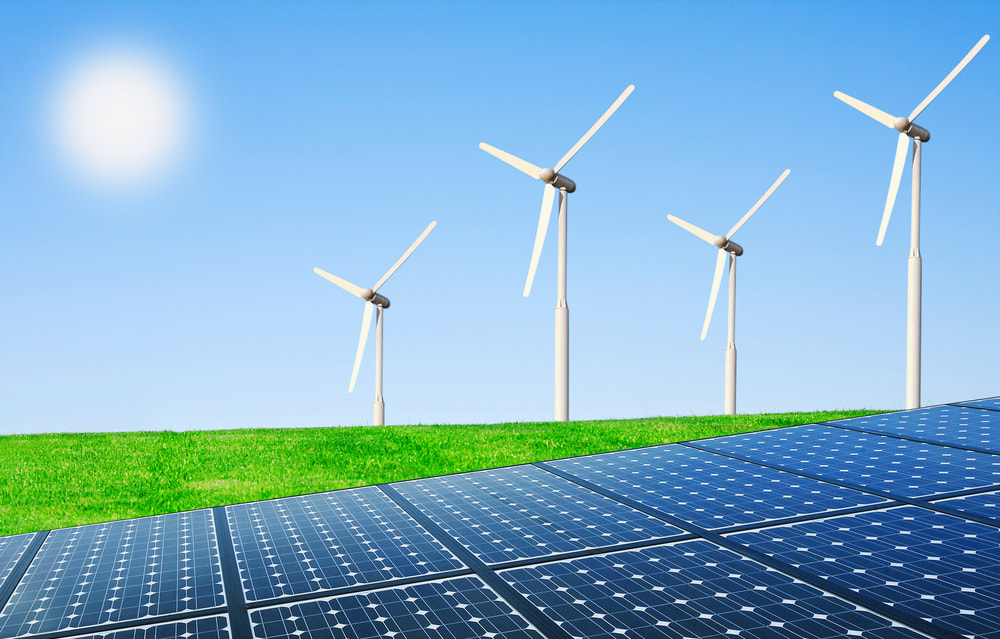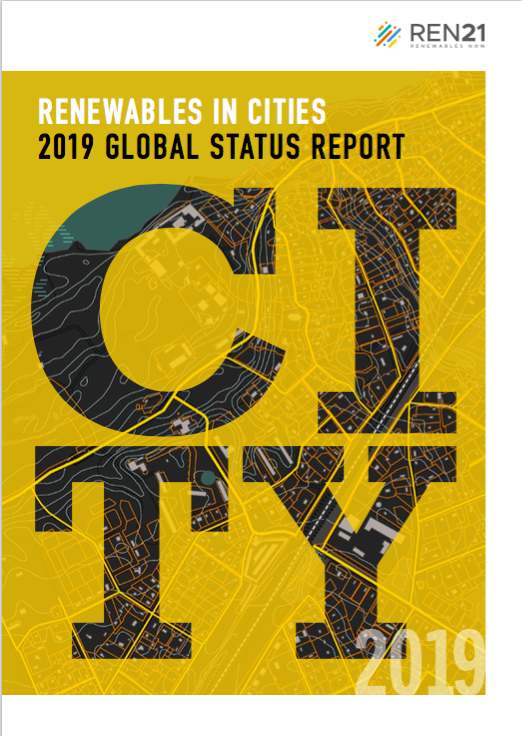
|
|
|
As reported by Wind Power Monthly, the Horizonte project in Chile's Atacama Desert would consist of 140 wind turbines with a total potential capacity of up to 980MW and is expected to generate around 2,000GWh of electricity annually. The project would be built on government land that has been set aside for renewable energy projects. Chilean energy company Colbun has applied for an environmental license to build the project.
Six U.S. states have passed laws committing to 100% renewable and/or zero-carbon electricity by 2050 or sooner:
Puerto Rico and Washington, D.C., have also made 100% clean energy commitments. Building on this momentum, Environment America and other advocacy groups are now calling on 15 more states to commit to 100% clean electricity. Despite the announced withdrawal by the Trump Administration of the United States from the Paris Agreement, climate and clean energy progress continues across the Americas. The following are some of the significant announcements by national and sub-national governments at the United Nations Climate Change Conference (COP 25) held in December 2019 in Madrid, Spain. America's Pledge, a coalition of U.S. states, cities, businesses, communities of faith, universities, health care and cultural institutions, and other organizations confirmed their commitment to fulfill America’s climate pledge to the world. The latest America's Pledge report, released on December 9, 2019, projects two emissions reductions scenarios based on city, state, business, and federal adoption of ambitious climate action policies:
Chile, Colombia, Costa Rica, Dominican Republic, Ecuador, Guatemala, Haiti, Honduras, Paraguay and Peru officially declared their commitment to a collective regional objective of 70 percent of renewable energy by 2030. The target was originally announced in November in Peru and will increase renewable energy generation from the current level of 56 percent, with a focus on non-conventional renewable energies. OLADE, the Latin American Energy Organization, will coordinate the initiative and provide data and a platform for countries to develop a work plan to implement the target. (OLADE 12/10/2019) [reprinted from NRDC Latin America Green News] Twelve renewable energy associations from Argentina, Chile, Colombia, Ecuador, Mexico, Peru, Uruguay and Spain signed an agreement to work together to promote renewable energy as a climate change mitigation solution. As part of the Ibero-american Renewable Energy Alliance, the 12 associations will work to replace fossil fuels, build “respectful, harmonious and constructive relations with communities in the areas where projects are developed," and support competition. ACERA, the Chilean Renewable Energy Association, has assumed the General Coordination of the alliance for one year, with the option of re-election for an additional consecutive period. (Revista Electricidad 12/10/2019) [reprinted from NRDC Latin America Green News] Photo: United Nations Climate Change - COP25, https://unfccc.int/cop25
We are pleased to share the new Renewables in Cities 2019 Global Status Report, which was released this week by the Renewable Energy Policy Network for the 21st Century (REN21). This report provides an overview of cities’ contributions to the global renewable energy transition.
Cities play a key role in accelerating clean energy deployment because they account for 55% of the world’s population, 75% of global carbon dioxide emissions, and 2/3 of global energy demand.
The Renewables in Cities 2019 Global Status Report was produced in collaboration with a global network of research partners. More than 300 volunteers from REN21's international network, including the InterAmerican Clean Energy Institute, contributed to the report. REN21 is a global network of renewable energy stakeholders from science, government, NGOs, and industry working to advance the clean energy transition. REN21 publishes the annual Renewables Global Status Report series to provide the public and decision-makers with current and actionable information on renewable energy data, markets, technologies, and trends. All reports are available online, free-of-charge. Colombia Hosts Regional Workshop on Accelerating Renewable Energy Investments in Latin America10/31/2019
In September 2019, the International Renewable Energy Agency (IRENA), in collaboration with Colombia's Ministry of Mines and Energy held a regional workshop in Bogota, Colombia "to explore the current renewable energy policy landscape in Latin America, the growing role of public and private financing for renewables, and the available project facilitation tools for countries in the region." Presentation and discussion topics included:
A summary of the workshop and copies of presentations are available here. Photo credit: IRENA
Colombia and Chile recently announced electric vehicle programs. The following updates are from NRDC's Latin America Green News.*
* Latin America Green News is a selection of weekly news highlights about environmental and energy issues in Latin America. It is prepared by the Natural Resources Defense Council's (NRDC) Latin America Project. For a free email subscription, please sign up here.  Latin America and Caribbean Climate Week 2019 (LACCW) is underway in the City of Salvador da Bahía, Brazil. With representatives from all LAC countries attending, the agenda focuses on local strategies for addressing climate change in the region, including: energy transition; industry transition; infrastructure, cities and local governments; and nature-based solutions. Participants include ministers of Brazil and other countries in the region, the Mayor of Salvador, local authorities, regional leaders from public and private sectors, civil society and UN officials. According to the UN Climate announcement: "To boost ambition and accelerate the implementation of the Paris Agreement and the 2030 Agenda for Sustainable Development, the results of the LACCW will feed into the outcome of the Climate Action Summit organized by the UN Secretary-General on 23 September in New York. The LACCW will be the occasion to discuss challenges and opportunities for climate action from a Latin American and Caribbean perspective. It will offer the opportunity to key actors in the region from across sectors to convene, learn and exchange knowledge and best practices, to assess, jointly plan and create new climate action initiatives." Governments are currently working on updating their national climate plans (known as Nationally Determined Contributions or NDCs) in an effort to meet the goals of the Paris Climate Change Agreement of limiting global average temperature rise to 1.5 degrees Celsius and achieving carbon neutrality by 2050. The next intergovernmental climate change conference, known as COP 25, will take place in Santiago, Chile from December 2 to 13, 2019. Relevant Links:
In a major milestone for the clean energy transition, renewable energy sources have for the first time exceeded coal both in generation and capacity in the U.S. electricity sector. Renewables Generate More Electricity Than Coal The U.S. Energy Information Administration (EIA) reports that: "In April 2019, U.S. monthly electricity generation from renewable sources exceeded coal-fired generation for the first time based on data in EIA’s Electric Power Monthly. Renewable sources provided 23% of total electricity generation to coal’s 20%. This outcome reflects both seasonal factors as well as long-term increases in renewable generation and decreases in coal generation. EIA includes utility-scale hydropower, wind, solar, geothermal, and biomass in its definition of renewable electricity generation." Renewable Power Capacity Also Exceeds Coal The trend towards renewables is also reflected in installed power generation capacity statistics published by the Federal Electricity Regulatory Commission (FERC). FERC's April 2019 Energy Infrastructure Update reports that coal accounted for 21.55% of total US installed capacity, while renewables accounted for 21.56%. Source: FERC Energy Infrastructure Update (April 2019) Long Term Trends
Despite the shift away from coal, the U.S. is still dependent on fossil fuels for electricity generation, with natural gas accounting for 44.44% of generation capacity. In addition, the EIA forecasts that coal will generate more electricity than renewables on an average annual basis in 2019 and 2020. However, both EIA and FERC statistics only report data for utility-scale facilities, which do not reflect the contribution of distributed small-scale renewables, such as the millions of roof-top solar systems that account for approximately 30% of the nation's electrical generation by solar. Projected capacity additions indicate that renewables capacity will grow at a faster rate than fossil fuel capacity, such that renewables will likely supply the largest share of US electricity supply within a few years. An increasing number of countries are generating more than 20% of their electricity with solar PV and wind, according to the latest Renewables 2019 Global Status Report, a comprehensive annual overview of the state of renewable energy globally. However, the heating, cooling and transport sectors are still heavily reliant on fossil fuels, which are highly subsidized in many countries. As detailed in the report, robust policy and regulatory frameworks are needed to create conditions that allow renewable energy to compete with more expensive and carbon-emitting fuels.
Chile to Issue Green Bonds; Investors Commit $700 Million to New Clean Energy Infrastructure Fund5/31/2019
This month saw two major announcements relating to investment in clean energy infrastructure in Latin America:
- Chile announced plans to issue Latin America’s first sovereign green bond with the goal of raising up to $1.5 billion to support eligible green projects in six sectors: clean transportation, energy efficiency, renewable energy, living natural resources, land use and marine protected areas, water management and green buildings. - Copenhagen Infrastructure Partners announced that it had raised $700 million in the first closing of a new fund focused on renewable energy infrastructure in Asia and Latin America. The fund is expected to raise a total of $1 billion and will target investments in offshore and onshore wind, solar PV, biomass and waste-to-energy and transmission grid systems among others. As of 2018, Brazil, Mexico, and Chile are the top countries receiving cross-border clean energy investment in Latin America. |
Categories
All
Archives
January 2025
Blogroll
|
|
© 2013 - 2025 InterAmerican Clean Energy Institute, a project of Earth Ways Foundation Inc, a 501(c)3 nonprofit organization.
|
Web Hosting by iPage
|








 RSS Feed
RSS Feed